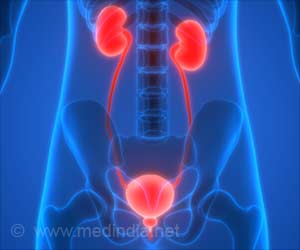Life expectancy has increased by seven years in Russia between 1994 and 2016, finds a new study. Even the death rate among children under age 5 decreased by nearly 60%.

‘The insights from this comprehensive study can help the Policymakers understand the progress Russia’s population health leaders have made and in-cooperate it in their own policy.’





"These are significant accomplishments," said Dr. Mohsen Naghavi, a professor of health metrics sciences at the Institute for Health Metrics and Evaluation (IHME) at the University of Washington. "Russia's public health officials deserve recognition for their efforts lowering the country's burden of disease."However, the study, published today in the international medical journal The Lancet, concludes the nation continues to face considerable health challenges.
Despite improvement from the mid-1990s, a nearly 11-year gap in life expectancy remained between Russian men and women in 2016. Moreover, Russia exceeds all other countries for age-adjusted premature death rates attributed to alcohol use disorders and has the second-highest premature death rate from drug use globally.
"Like many other nations, more than half of all deaths in Russia can be attributed to behavioral risk factors, most prominently alcohol and substance abuse," said Dr. Christopher Murray, an author on the study and director IHME.
The study, "Burden of disease in Russia, 1980-2016: a systematic analysis for the Global Burden of Disease Study 2016," was published today in the international medical journal The Lancet. It is part of the Global Burden of Disease (GBD) study, a comprehensive effort to quantify health internationally, covering 333 diseases and injuries and 84 risk factors.
Advertisement
The Russia study was led by Dr. Vladimir Starodubov, director of the Federal Research Institute for Health Organization and Informatics (FRIHOI) of the Ministry of Health, and was written in partnership with Russian experts, as well as representatives from the WHO European Office and IHME. A majority of the study authors are Russian.
Advertisement
Among the findings:
- In 2016, life expectancy at birth for males in Russia was 65.4 years, whereas for females it was 76.2 years; for males, this marks an improvement from 57.4 in 1994, and for females, an improvement from 70.8 the same year.
- With age-adjusted premature rates of 680 YLLs per 100,000 people, premature mortality from alcohol use disorders in Russia in 2016 is the highest in the world, followed next by Mongolia at 647 YLLs per 100,000 people.
- Russia's age-adjusted premature death rates for drug use disorders (447 YLLs per 100,000 people) is second highest in the world.
- Child mortality rates decreased between 2000 and 2016 by 58%.
- Russian men have a disproportionately high burden of disease relative to women.
- Age-adjusted rates of premature mortality in 2016 were higher for men than for women across all 20 leading causes of YLLs.
- Age-adjusted premature mortality rates for cirrhosis and other chronic liver diseases due to alcohol use among both men and women increased by 43% between 2000 and 2016.
- Age-adjusted rates of premature death from lung cancer were more than seven times higher for men than for women, and suicide rates were almost six times higher.
- For men aged 15-49 years, alcohol use contributed to one in three deaths (34%) in 2016.
- According to Starodubov, "Significant improvements in the health indicators of the population of the Russian Federation have been achieved, and it is a credit to state alcohol policy, improving medical care, and increasing attention to a healthy lifestyle."
"Despite the challenges Russia is facing, the nation's population health leaders have made progress in addressing some key problems," Murray said. "The insights from this comprehensive study should be enlightening to policymakers and others responsible for planning and delivering health services for the nation's 144 million people."
Top 10 causes of premature mortality in 2016:
- Ischemic heart disease
- Stroke
- Suicide
- Cardiomyopathy
- Road injuries
- Lower respiratory infections
- Lung cancer
- Alcohol use disorders
- Interpersonal violence
- HIV/AIDS
- High systolic blood pressure
- Alcohol use
- Smoking
- High total cholesterol
- High body-mass index
- Diet low in whole grains
- High fasting plasma glucose
- Diet low in fruits
- Diet low in nuts and seeds
- Ambient particulate matter pollution
Source-Eurekalert









